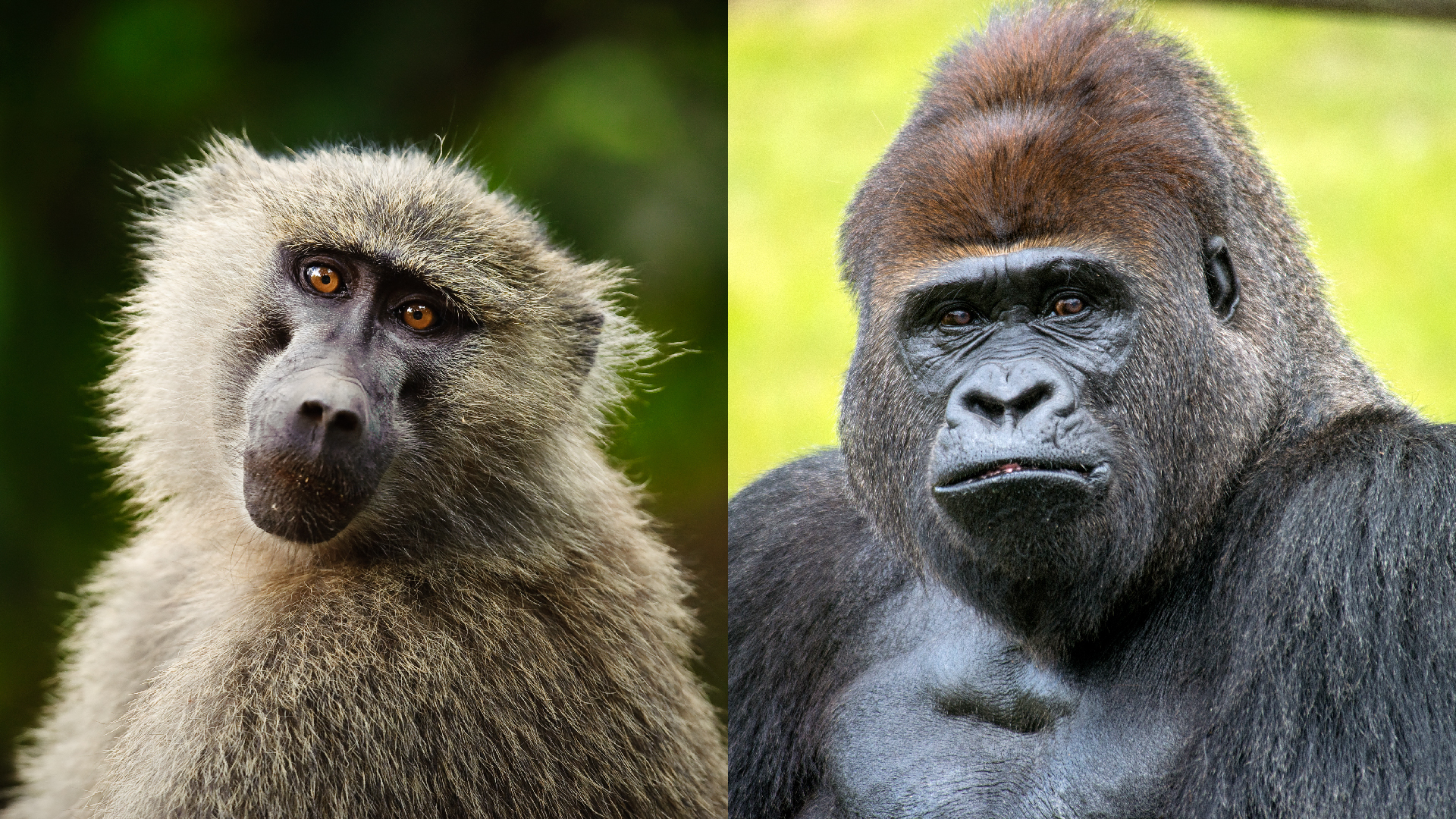On its face, a comparison of monkeys and apes seems straightforward: Modern primates have defining physical features and behaviors that clearly sort them in different categories.
Beginning with living animals, those differences are easy to pick out. Most monkeys have tails; some have prehensile tails, which means they can grasp and hold things. They’re quadrupeds, meaning they use all four limbs to get around. They have four limbs that are about the same length, as well as a flexible spine.
Monkeys can be subdivided into Old World and New World classifications based on where they live. Old World monkeys live in Africa and Asia, while New World monkeys live in Central and South America, according to the Pan African Sanctuary Alliance. Old World monkeys are also known as African-Eurasian and New World monkeys as Neotropical.
Apes, on the other hand, don’t have tails. Their “orthograde” body plan makes them capable of standing upright and gives them disproportionate limbs, with long arms and shorter legs. Inversely, humans — which are also apes — have long legs and shorter arms. Apes also have a larger brain relative to their body size than monkeys do, which has critical implications for intelligence.
“There is a significant difference in intelligence between monkeys and apes,” Becky Malinsky, curator of primates at the Smithsonian’s National Zoo and Conservation Biology Institute, told Live Science in an email. “While monkeys are capable of complex thinking, they generally have a lower cognitive capacity than apes.”
Related: What did the last common ancestor between humans and apes look like?
Apes can be subdivided into the great and lesser apes based on their size. Great apes include chimpanzees (Pan troglodytes), eastern gorillas (Gorilla beringei), western gorillas (Gorilla gorilla) and bonobos (Pan paniscus) — all of which live in Africa — and orangutans (Pongo), which live in Southeast Asia. Lesser apes comprise gibbons and siamangs, which live in Southeast Asia. Although humans are also great apes, this article focuses on non-human primates.
Monkey versus ape genetics
But when you consider their evolutionary history, the difference between apes and monkeys is murkier.
“From the surface, it seems like a very easy thing to discuss,” Sergio Almécija, a senior research scientist of biological anthropology at the American Museum of Natural History in New York City, told Live Science. “But that superficial impression, I think, [is] based on living animals only.”
According to a review published in the journal Science in 2021, of which Almécija is the lead author, humans diverged from apes — specifically chimpanzees — between 9.3 million and 6.5 million years ago.
But apes and monkeys diverged from their last common ancestor even longer ago: between 23 million and 34 million years ago, according to a 2013 paper published in the journal Nature. The authors analyzed the oldest known fossils from Old World (African-Eurasian) monkeys and apes, found in the Rukwa Rift Basin in southwestern Tanzania: a partial jawbone with three teeth from an ape, and a single molar from a monkey. The team classified these novel fossil primates, calling the ape Rukwapithecus fleaglei and the monkey Nsungwepithecus gunnelli. Geological dating of the rock layer in which these fossils were found indicate they’re about 25.2 million years old.
Still, there’s much more to learn about how primates evolved over millions of years. “The fossil record can lead to varying interpretations and debate,” Malinsky wrote.
“It’s really much more complex than we think,” Almécija said. “We don’t have as much information as we think we do to answer some of these questions.”
